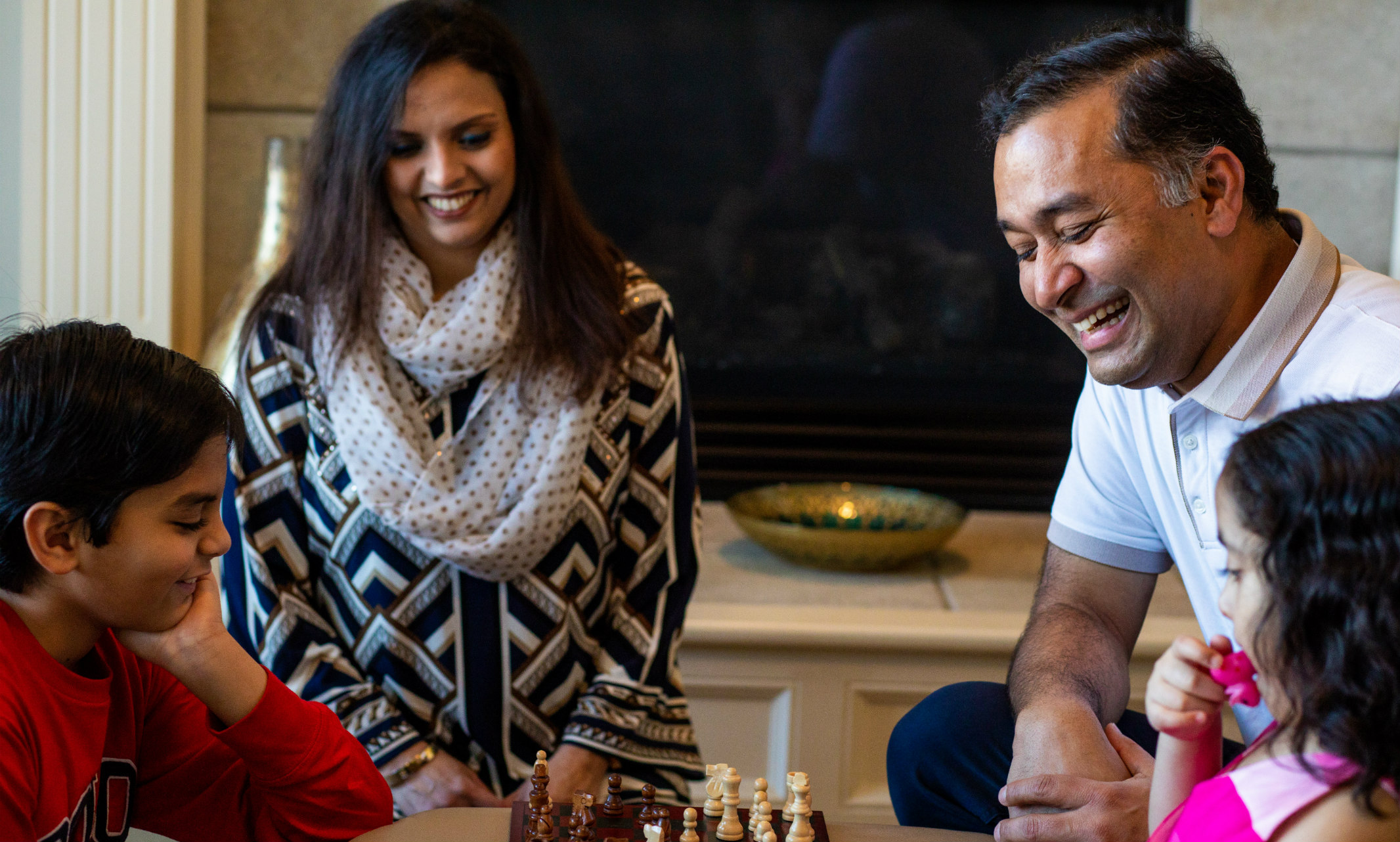Professor Masud Chowdhury, Ph.D., and his postdoctoral fellow, Mahrukh Khan, Ph.D., are in the beginning phases of developing a new approach that would detect the severity of asthma at different stages without subjecting patients to invasive measures.
Their work is somewhat personal. Chowdhury has a child with asthma and has experienced the anxiety of identifying and treating asthma attacks. Khan went through the difficulty of trying to diagnose a young child with a persistent cough.
“My son suffered from the time he was a year old until he was four. My daughter, who is five years old, had to go to the emergency room twice last year,” Chowdhury says. “Now I know firsthand the severity of the condition. We carry two types of nebulizers.”
Khan has experienced similar challenges.
“My daughter was having problems breathing when she was very young,” Khan says. “Her daycare teacher mentioned that asthma was very common here in Kansas City and that may be the cause. It was so alarming for me. I did a lot of research.”
Asthma is a chronic condition that inflames and narrows the airways of the lungs. This narrowing creates symptoms such as shortness of breath, a persistent cough and a feeling of tightness in the chest. Some people can easily manage their asthma, but it can be extremely serious for others. Every day ten Americans die from asthma, and many of these deaths are preventable with treatment.
Adults generally monitor their own breathing, and when situations escalate can use a nebulizer — or inhaler — to deliver medication directly to the lungs. Monitoring children with asthma can be a particularly stressful responsibility, as children don’t always recognize symptoms until they escalate.
“This can be a big hurdle in monitoring, because parents cannot always determine if children need to be taken to the hospital or treated,” Khan says. “If we develop a low-profile wireless monitoring device, we can improve the accuracy of monitoring and help parents and other caregivers make better decisions.”
Currently, people with asthma monitor symptoms with a peak flow meter. The device looks like a kazoo, with a gauge that measures how well air is flowing. To achieve an accurate reading, the patient needs to close their lips tightly around the mouthpiece, keep their tongue away from the opening and blow as hard as possible. That physical maneuvering is often difficult with young children and older adults.
Detection of an impending attack can be tricky — sometimes even for doctors. A wireless system could relieve the asthma sufferer and their caregivers from being in a constant state of alert. It could also send notifications to patients, caregivers and health- care providers in real time.
“If a child or older person is having an asthma attack away from caregivers, we can integrate a warning system they can use within the monitor,” Chowdhury says. “It could be programmed to notify the doctor and the family if the patient is unable to respond.”
The research is focused on detecting the concentration of mucus and water content in the lungs and bronchial system. To make the system effective, Khan and Chowdhury would need to expose the device to existing information so it can “learn.”
“We would have to train the system with microwave images of healthy lungs and bronchial systems and then images of different levels of asthma so that it can recognize the severity of the condition,” Chowdhury says.
This data collection may not be as far-fetched as it seems. The technology has been in use in the medical field for years and is currently in place for monitoring blood glucose without collecting blood samples through needle pricks. Kahn is also developing electromagnetic wave-based technology that can be used for detection of breast cancer.
The doctors view this as a long-term project because of the prototype development. The initial phase — collecting data, testing information-gathering methods and developing and testing the resulting device — will take a few years, but Kahn and Chowdhury are dedicated to its completion, both professionally and personally.
“When you witness an asthma attack firsthand, it’s very scary — especially if it’s a young child,” Chowdhury says. “We are hoping to use this evolving technology to identify reliable early detection so patients can receive early and effective treatment. This will provide peace of mind for asthma sufferers and their caregivers.”

